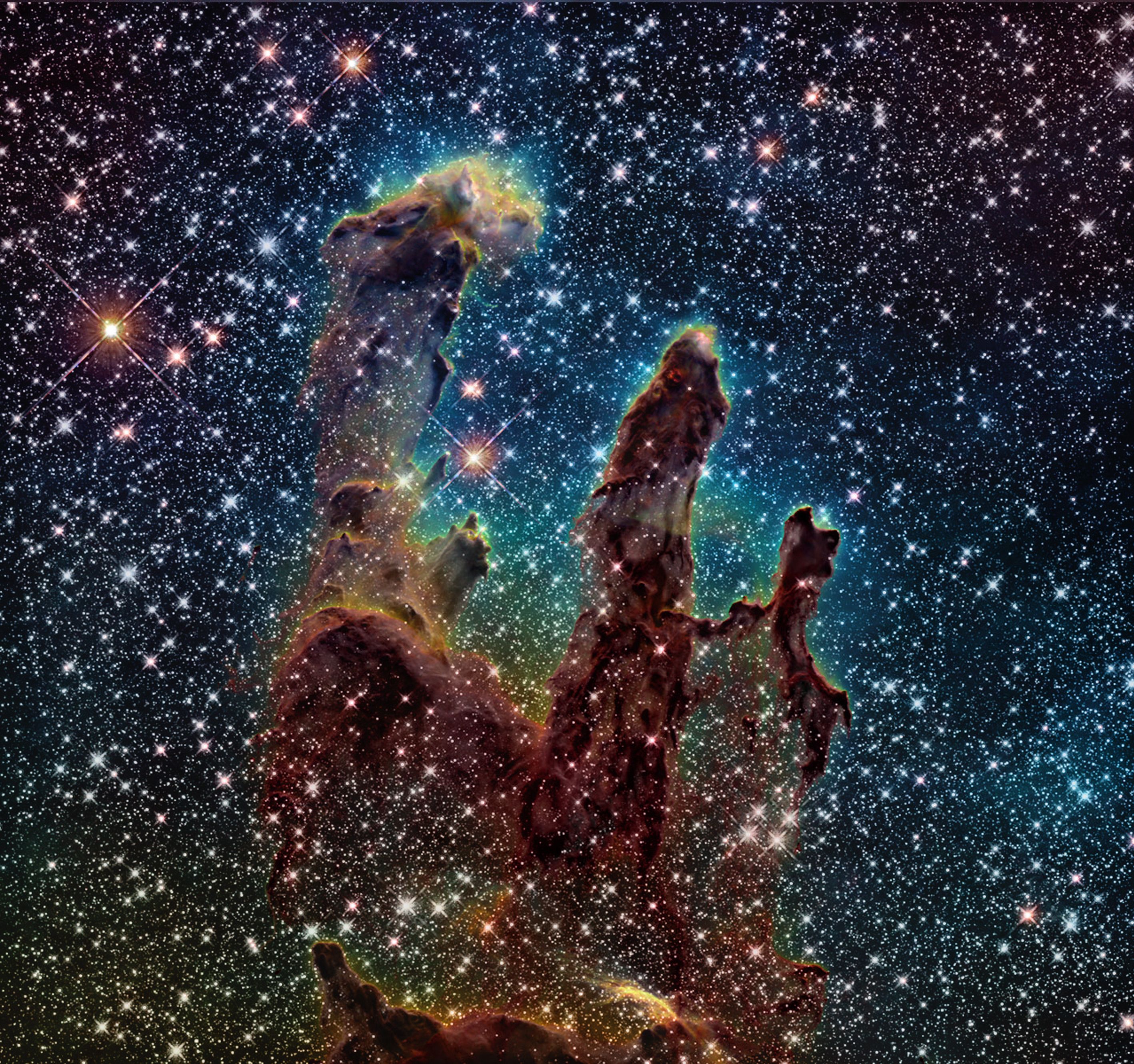For my Science, Technology, Mathematics, Academic, Agnostic, and Atheist Friends

John 11:25-26 reads:
"Jesus said to her, 'I am the resurrection and the life; whoever believes in me, even if he dies, will live, and everyone who lives and believes in me will never die. Do you believe this"?
The Case for Christianity: An Interdisciplinary, Evidence-Based Defense
By Coach Larry Weber
Introduction
The claim that Christianity is uniquely true hinges on the historical resurrection of Jesus of Nazareth. If the resurrection occurred, then Christianity is not merely one religion among many, but the divine disclosure of God’s plan of redemption. The following case integrates historical, archaeological, philosophical, psychological, and theological evidence. It draws on Scripture, the early Church Fathers, modern philosophy, peer-reviewed research on near-death experiences, and probability theory. It aims to meet the standards of a skeptical academic audience while remaining faithful to Church teachings.
1. Historical Reliability of the New Testament
The New Testament is the most well-attested ancient document. Over 5,800 Greek manuscripts and 20,000 manuscripts in other languages exist, some within decades of the autographs. The earliest fragment (P52, John Rylands Papyrus) is dated c. AD 125, only a generation after composition1. Paul’s creed in 1 Corinthians 15:3–7, delivered within three to five years of Jesus’ crucifixion, is recognized as pre-Pauline tradition even by critical scholars2. This timeline is too short for legend to develop. Richard Bauckham has argued that the Gospels are based on eyewitness testimony3. Luke’s precision has been confirmed by archaeology, accurately referencing 32 countries, 54 cities, and 9 islands4.
2. Archaeological Corroboration
Far from undermining Christianity, archaeology consistently confirms the biblical record:
- Pontius Pilate inscription at Caesarea (1961) confirms his title as prefect5.
- Caiaphas ossuary (1990) bears the name of the high priest who condemned Jesus6.
- Pool of Bethesda with “five porticoes” discovered in line with John 5:27.
- Magdala synagogue (2009) confirms Gospel claims that Jesus preached in Galilean synagogues8.
- Heel bone of a crucified man (1968) validates Roman crucifixion9.
No archaeological discovery has contradicted a biblical claim10.
3. Prophecy Fulfillment
Jesus fulfilled over 300 Old Testament prophecies. Examples include:
- Birth in Bethlehem (Micah 5:2; Matthew 2:1).
- Betrayal for thirty pieces of silver (Zechariah 11:12–13; Matthew 26:15).
- Piercing of hands and feet (Psalm 22:16; John 20:25).
Peter Stoner calculated the probability of eight prophecies being fulfilled by chance as 1 in 10^1711. To illustrate: covering Texas two feet deep with silver dollars, blindfolding a man, and asking him to find one particular coin would approximate the odds of this prophecy fulfillment. Extending this to 48 prophecies results in odds so astronomical they eliminate reasonable doubt.
4. The Resurrection
Gary Habermas and Michael Licona’s “minimal facts” approach identifies facts accepted by most scholars:
- Jesus died by crucifixion.
- His tomb was empty.
- Many had post-mortem experiences of Jesus.
- Skeptics (James, Paul) converted.
- The resurrection was proclaimed immediately in Jerusalem12.
Alternative explanations fail to account for all facts. N.T. Wright concludes the bodily resurrection remains the best historical explanation13.
5. Non-Christian Corroborations
Critics of Christianity confirm core facts:
- Tacitus affirms Jesus’ execution under Pilate (Annals 15.44)15.
- Josephus mentions Jesus as a crucified teacher (Antiquities 18.3.3)16.
- Pliny the Younger notes Christians worshiped Christ “as a god” (Letters 10.96)17.
- Babylonian Talmud states Jesus was “hanged on Passover eve” (Sanhedrin 43a)18.
6. Martyrdom of the Apostles
The apostles gained no wealth or power; most died as martyrs for their testimony. This willingness to die supports sincerity: no one dies for what they know to be false19.
7. Near-Death Experiences and the Soul
Peer-reviewed studies support consciousness beyond brain function:
- Pim van Lommel’s Lancet study reported veridical NDEs in cardiac arrest patients20.
- Sam Parnia’s AWARE study confirmed verified perceptions during clinical death21.
- Robert Spitzer integrates NDE evidence with Thomistic metaphysics as evidence for the soul’s survival22.
The Church does not yet have an official teaching on NDEs but advises prudence and discernment, acknowledging their importance in exploring the human soul.
8. Philosophical Arguments
Moral Argument: Objective morality exists and rests in God’s eternal nature23.
Fine-Tuning Argument: The odds of a life-permitting universe are extremely small, suggesting design over chance24.
9. Early Church Fathers
Eyewitness-linked Fathers affirm the resurrection within a generation of the apostles:
- Clement of Rome (AD 96) appeals to the resurrection as fact.
- Ignatius of Antioch (AD 107) insists on Jesus’ bodily resurrection.
- Polycarp of Smyrna (AD 110) calls Jesus “our Lord and God.”
10. Convergence of Evidence
The convergence of manuscript reliability, archaeology, prophecy fulfillment, eyewitness testimony, NDE studies, moral philosophy, and patristic witness provides a compelling, cumulative case for Christianity unmatched by rival worldviews.
Conclusion
Christianity rests on historical bedrock: Jesus was crucified, buried, and rose from the dead. Early eyewitnesses proclaimed this truth under persecution. Archaeology and philosophy support it. Modern medical science lends credibility to the soul’s transcendence. To deny this requires more faith in chance than belief itself.
As Augustine said:
“Understanding is the reward of faith. Therefore, seek not to understand that you may believe, but believe that you may understand” (Confessions I.1)29.
Endnotes
- Bruce Metzger, The Text of the New Testament, 4th ed. (Oxford: Oxford University Press, 2005). ↩
- James D.G. Dunn, Jesus Remembered (Grand Rapids: Eerdmans, 2003), 855; Bart Ehrman, Did Jesus Exist? (New York: HarperOne, 2012). ↩
- Richard Bauckham, Jesus and the Eyewitnesses (Grand Rapids: Eerdmans, 2006). ↩
- William Ramsay, The Bearing of Recent Discovery on the Trustworthiness of the New Testament (London: Hodder & Stoughton, 1915). ↩
- Antonio Frova, “L'iscrizione di Ponzio Pilato a Cesarea,” Rendiconti, 1961. ↩
- Zvi Greenhut, “Burial Cave of the Caiaphas Family,” Israel Exploration Journal 40 (1991). ↩
- Urban von Wahlde, The Gospel and Letters of John (Grand Rapids: Eerdmans, 2010). ↩
- Israel Antiquities Authority, Excavation Report, 2009. ↩
- Vassilios Tzaferis, “Crucifixion — The Archaeological Evidence,” Biblical Archaeology Review (1985). ↩
- Titus Kennedy, Unearthing the Bible (Eugene: Harvest House, 2020). ↩
- Peter Stoner, Science Speaks (Chicago: Moody Press, 1958). ↩
- Gary Habermas and Michael Licona, The Case for the Resurrection of Jesus (Grand Rapids: Kregel, 2004). ↩
- N.T. Wright, The Resurrection of the Son of God (Minneapolis: Fortress, 2003). ↩
- Catechism of the Catholic Church, §638. ↩
- Tacitus, Annals 15.44. ↩
- Josephus, Antiquities 18.3.3. ↩
- Pliny the Younger, Letters 10.96. ↩
- Babylonian Talmud, Sanhedrin 43a. ↩
- Sean McDowell, The Fate of the Apostles (London: Routledge, 2015). ↩
- Pim van Lommel, “Near-Death Experience in Survivors of Cardiac Arrest,” The Lancet 358 (2001). ↩
- Sam Parnia et al., “AWARE Study,” Resuscitation 85 (2014). ↩
- Robert Spitzer, The Soul’s Upward Yearning (San Francisco: Ignatius, 2015). ↩
- Augustine, On Free Choice of the Will. ↩
- Roger Penrose, The Road to Reality (New York: Knopf, 2005). ↩
- Catechism of the Catholic Church, §§31–35. ↩
- Clement of Rome, 1 Clement (c. AD 96). ↩
- Ignatius of Antioch, Letter to the Smyrnaeans (c. AD 107). ↩
- Polycarp, Letter to the Philippians (c. AD 110). ↩
- Augustine, Confessions I.1. ↩
Near Death Experience Scientific Studies
I did not have time to share scientific evidence for some near-death experiences in this article. One of the best sites for scientific evidence of true Near-Death Experiences is run by the former President of Gonzaga University here: The Definitive Guide to Near-Death Experiences
The guide is from the Magis Center | Science, Reason, and Faith site where Faith, Reason, and Science are discussed. The site is recognized as the meeting point of faith, reason, and science.

Church doctrine unequivocally affirms the existence of a divine designer responsible for all of creation.
How can you see a picture like this and not see the hand of God in it's design?
Image Credit: NASA

Witnessing the birth of one's child is undeniably a profound miracle, a testament to the divine work of God.
There are skeptics who debate the accuracy of probability calculations, journalists who dismiss the accounts of the 500 witnesses to Jesus' resurrection, and individuals who question every aspect of God, regardless of the evidence presented.
This cycle of disbelief will likely continue for some segment of the population in future generations, no matter how overwhelming and accurate the evidence for Christ may be.
The key point is this: when you witness the birth of your child, you can see the hand of God at work. No additional evidence or data is necessary.
I rest my case.